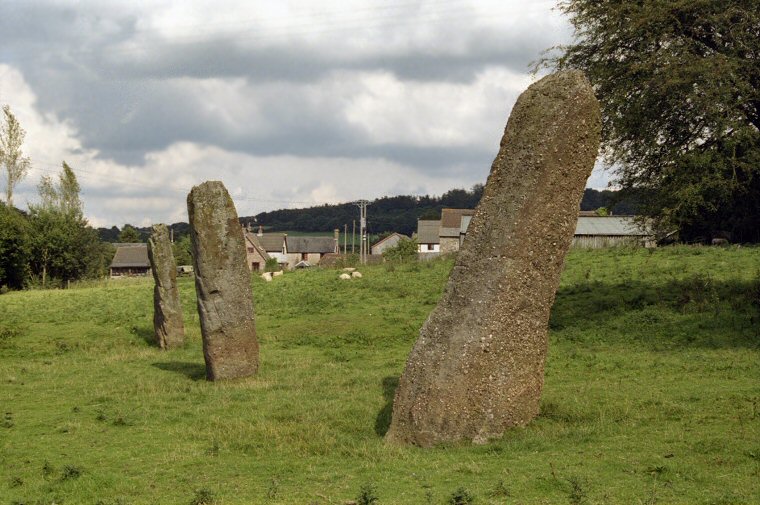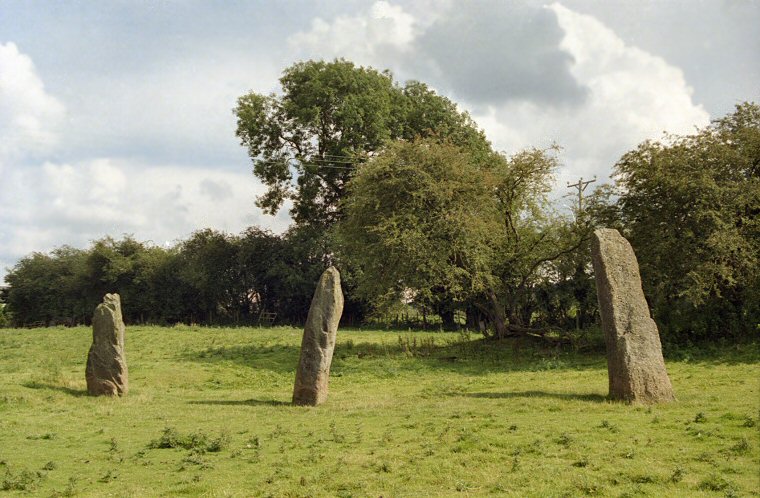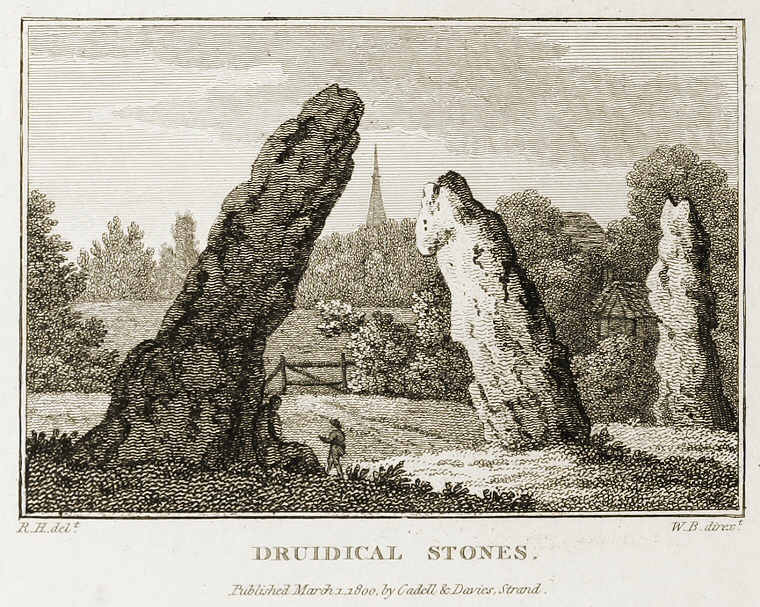
To
the southwest of the village of Trellech are three large standing stones in a
12 metre alignment, all three are leaning at angles but it is unlikely that
this is deliberate and more likely to have been caused by being poorly erected
or the result of land subsidence, possibly caused by people digging under the stones in the hope of finding buried treasure.
The heights of the stones vary with the tallest (and also the one with the most pronounced lean) standing over 4 metres in height while the shorter pair measure a still respectable 3.5 metres and 3 metres each. What the original purpose or symbolism of the stones was is unknown, as with many other stone alignments, but it could be that they formed part of a much larger ritual area that has either been destroyed or as yet remains to be recognised.
An indication of significance of the row to the local population was recognised by the church though, the stones are depicted on a 17th century carved stone sundial inside the chapel and a wooden church is known to have existed at Trellech (meaning either 'village of stones' or 'three stones') as early as the 7th century.
Being such a prominent local landmark the stones of course have legends attached to them. One says that they landed here after a throwing competition between the Devil and the giant Jack O'Kent while another says that their name commemorates a battle won by King Harold.
Probable Date: Bronze Age
The heights of the stones vary with the tallest (and also the one with the most pronounced lean) standing over 4 metres in height while the shorter pair measure a still respectable 3.5 metres and 3 metres each. What the original purpose or symbolism of the stones was is unknown, as with many other stone alignments, but it could be that they formed part of a much larger ritual area that has either been destroyed or as yet remains to be recognised.
An indication of significance of the row to the local population was recognised by the church though, the stones are depicted on a 17th century carved stone sundial inside the chapel and a wooden church is known to have existed at Trellech (meaning either 'village of stones' or 'three stones') as early as the 7th century.
Being such a prominent local landmark the stones of course have legends attached to them. One says that they landed here after a throwing competition between the Devil and the giant Jack O'Kent while another says that their name commemorates a battle won by King Harold.
Probable Date: Bronze Age


Illustration of Harold's Stones with Trellech Church in the background drawn by Sir Richard Colt Hoare and published in 'An historical tour in Monmouthshire' by William Coxe 1801. Colt Hoare is more famous for his work on the ancient sites around the Stonehenge area, here he seems to have gone overboard with the scale and roughness of the stones.